Chulilla, Valencia Spain is a small village with surprisingly many things to do and incredible natural beauty. We went there when traveling by van in Spain and were baffled by the nature scene and hikes you could do straight from the village.
But Chulilla is also home to fabulous medieval castle ruins crowning the hill overlooking the village and charming small streets.
A day trip to Chulilla is well worth it, but if you want to go climbing or hiking, I recommend spending a couple or three days to explore the top spots.
Here is a quick guide to Chulilla Valencia’s hidden treasure so you can explore this too. It’s easily one of my favorite hidden gems in Spain, if not only for the nature!
Disclosure: This post may contain affiliate links. That means that if you make a purchase through one of those links, I will get a small commission at no extra cost to you.
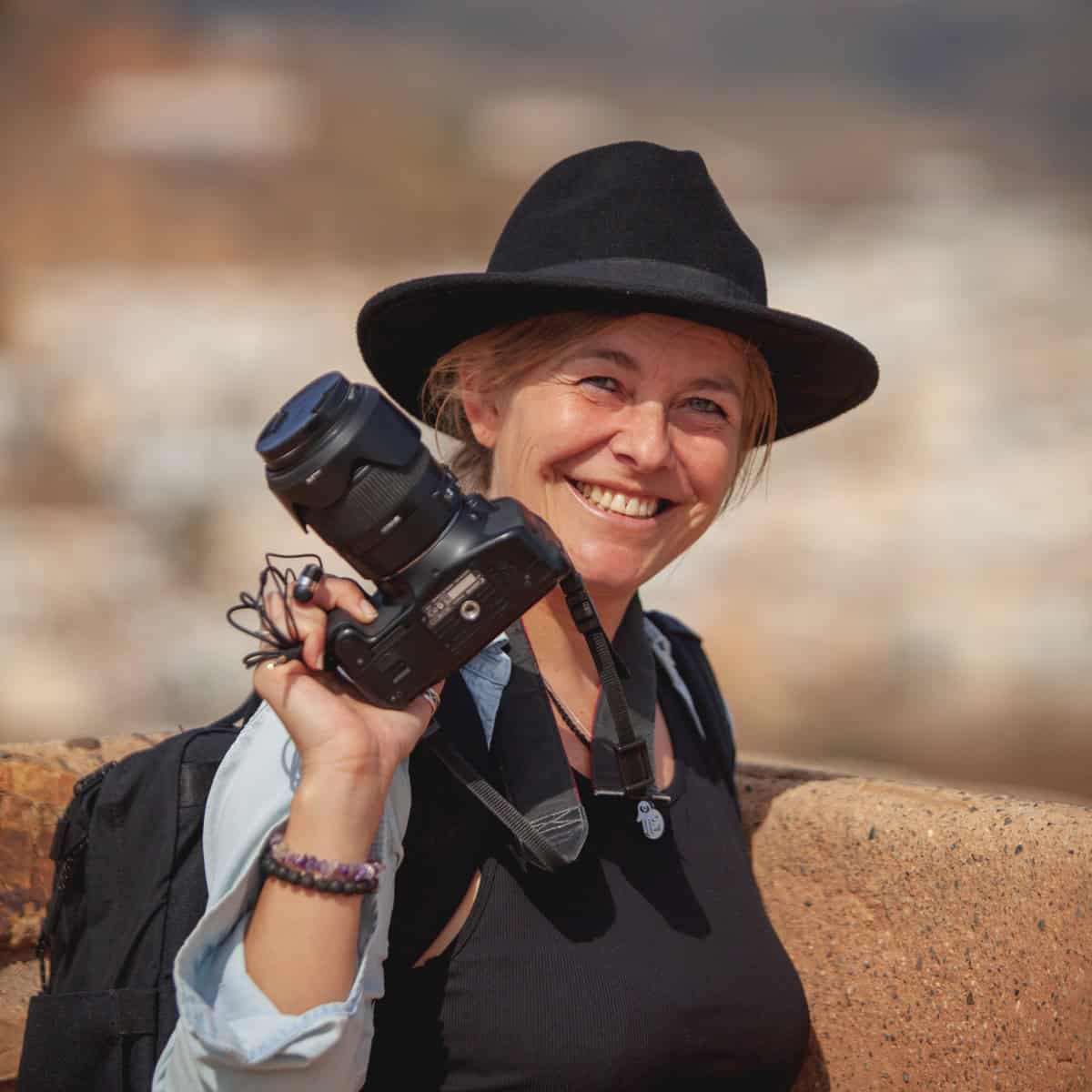
Hi, I’m Linn Haglund, the face behind Brainy Backpackers. I’ve been based in Spain for the last 10+ years, and travel locally and abroad whenever I have a chance. I’m passionate about responsible travel, slow and off the beaten path travel, and outdoor activities, especially hiking. I’m currently slow traveling in my van Persistence (Persi among friends) with my fiancée Mohammed and rescue puppy Atlas. I’m excited to help you explore this planet responsibly!
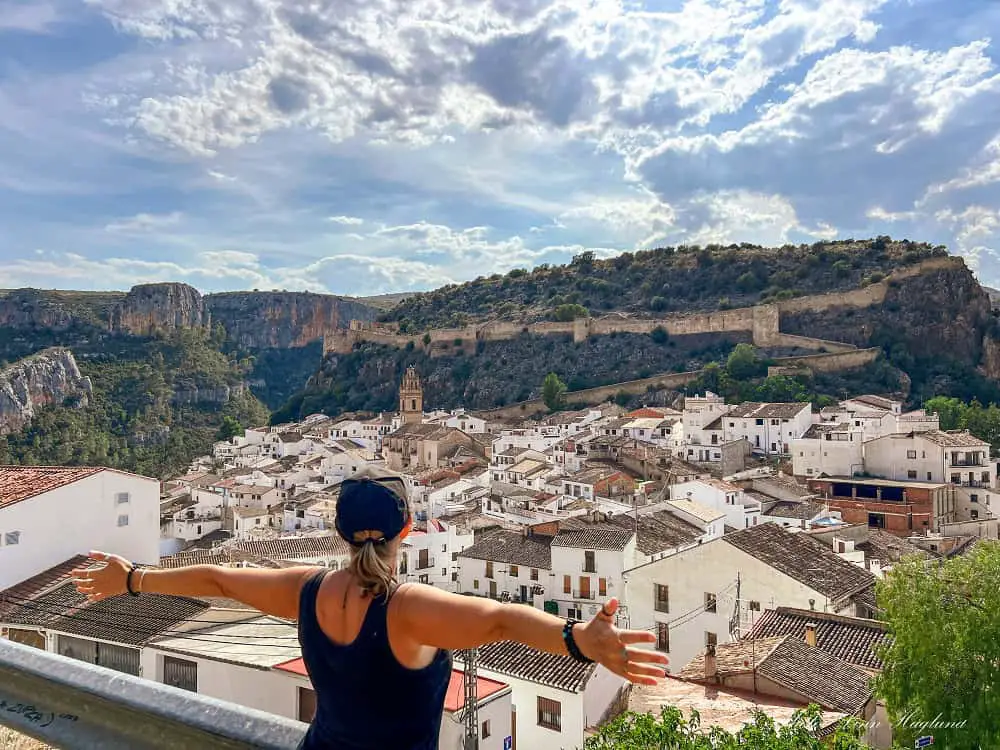
How to get to Chulilla, Valencia Spain
Chulilla Spain is located 63 kilometers inland from Valencia and is easy to reach by car or by guided tour.
Supposedly, there is a bus once a day on the weekdays from Valencia leaving around 18:00 from Valencia bus station, but I can’t find it in the timetable.
This means:
- I can’t verify
- I have no idea when the return to Valencia is
- You must stay a minimum of 1-2 nights in Chulilla if you travel by bus
It might be seasonal, so the best way to double-check is to contact the bus company directly before your trip.
👉JOIN OUR FACEBOOK GROUP FOR SPAIN AND PORTUGAL TRAVEL TIPS!
Join a guided tour
If you don’t have a car, the easiest way to visit Chulilla Spain is on this guided tour from Valencia. It includes the highlights of the village as well as the hanging bridges and the Charco Azul.
I love this tour as it’s in small groups (3-6 people) which makes it more personalized, and I generally find it easier to connect with both the guide and the others in the group.
Where to park in Chulilla
Chulilla has several parking areas around the village. The best place to stay is at the entrance of the village before driving down. There is a fairly large paid parking area overlooking Chulilla village there.
At the bottom of the village, at the start of the Charco Azul hike there is another one that looked free of charge (but I forgot to check) with space for 5-10 cars.
There is also a large dirt parking about a 10-minute walk along the main road from the village, right at the start of the hike of the hanging bridges.
If you travel by van, be aware that it’s not allowed to sleep in the van in any of these parking spaces (except maybe the bottom one.)
We stayed across the street from the large dirt parking next to the rubbish containers. There were no prohibition signs there and there was space for two cars/vans between two trees with great views, and behind the rubbish container structure, there is space for maybe 5-10 more vehicles.
Note that when campervanning in Spain, it’s not legal to leave any camping items like chairs or tables outside the van. Also, make sure you leave no trace. This spot was pretty dirty, so we picked up a few bags of rubbish when we were there, and I propose you do the same.
If we leave places better than we found them, there is a lesser chance of them “taking note of us being there” and prohibiting it. We generally didn’t find Chulilla very campervan friendly compared to other towns like Chelva and Buñol.
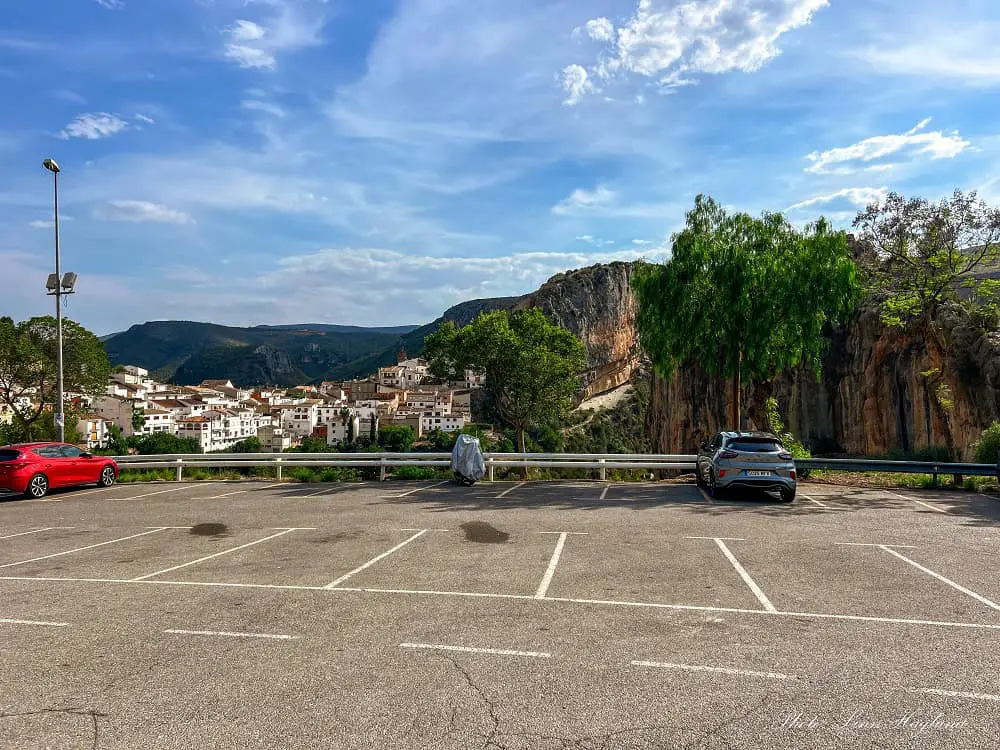
CHECK OUT OUR TRIP ON YOUTUBE
Where to stay in Chulilla
Chulilla is a small village surrounded by mountains, so you can either stay in the center of the village or outside, which is great as long as you have a car available. Here are my top picks for accommodation. Besides, there are several apartments and houses by private hosts.
Hostal El Pozo
This is a fabulous hotel in the center of Chulilla which is perfectly situated for all the hiking routes. The staff goes above and beyond to help guests and the rooms are nicely decorated and clean.
Refugio la Presa
If you prefer to stay a little outside the village, this is a nice and relaxed hotel surrounded by nature. It’s great if you travel by car and don’t mind getting around for the hikes and the village.

Things to do in Chulilla
Hanging Bridges of Chulilla
The town’s biggest attraction is the hike of the hanging bridges in Chulilla. I can easily say that this is one of the top hikes near Valencia.
It costs a Euro to walk the trail and you pay at the trailhead which is a few minutes walk out of the town (on the main road on the upper side.)
When I was there, there wasn’t anyone to collect money or at the checkpoint, so I don’t know if they take cards, but I would assume they take cash only. The money goes to maintain the area.
This trail is mesmerizing, going through the gorge and crossing two hanging bridges. The first one is quite high up, so it’s not for the faint-hearted.
The trail goes 3.5 kilometers through the canyon before you turn around and walk back where you came from unless you hike the entire Ruta de los Pontaneros, which I’ll get back to a bit later.
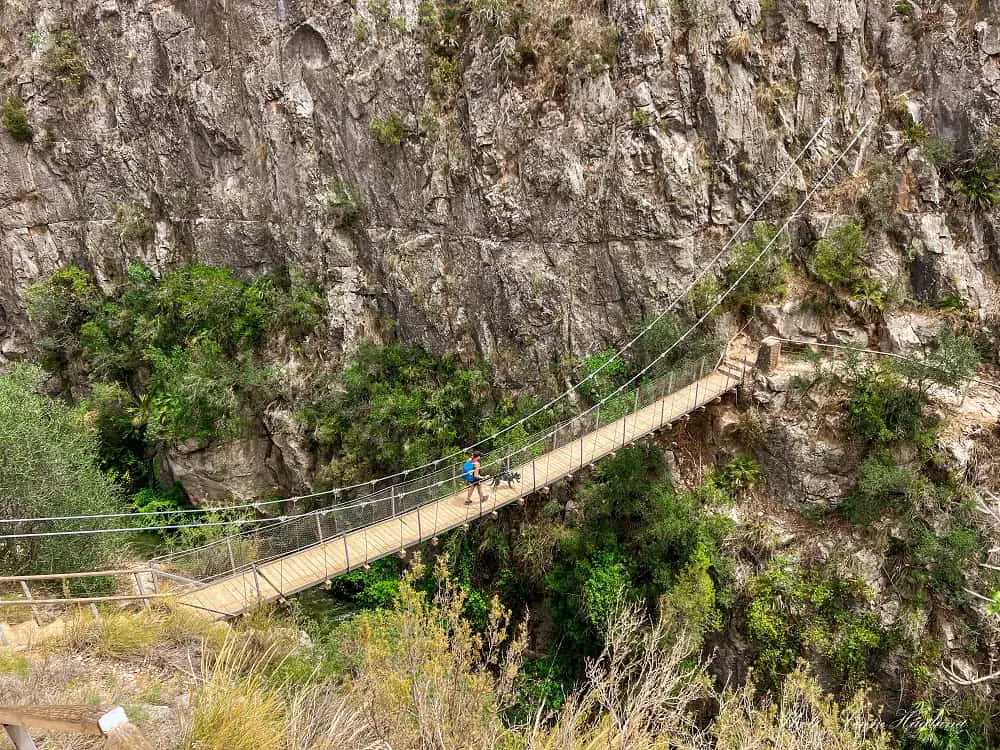
Chulilla Castle
The remains of Chulilla Castle are the most iconic I’ve seen in a long time. The castle walls cover the hillside overlooking Chulilla from one side to the other.
It’s originally Moorish, but it’s very likely that there has been a fortified structure there way before that.
It’s free to go there and the views are spectacular. There are also some information signs as you walk up. I was quite bummed that the castle hasn’t been better looked after, but at the same time it was cool to walk in the ruined area as it gives you a proper feeling of how old it is.
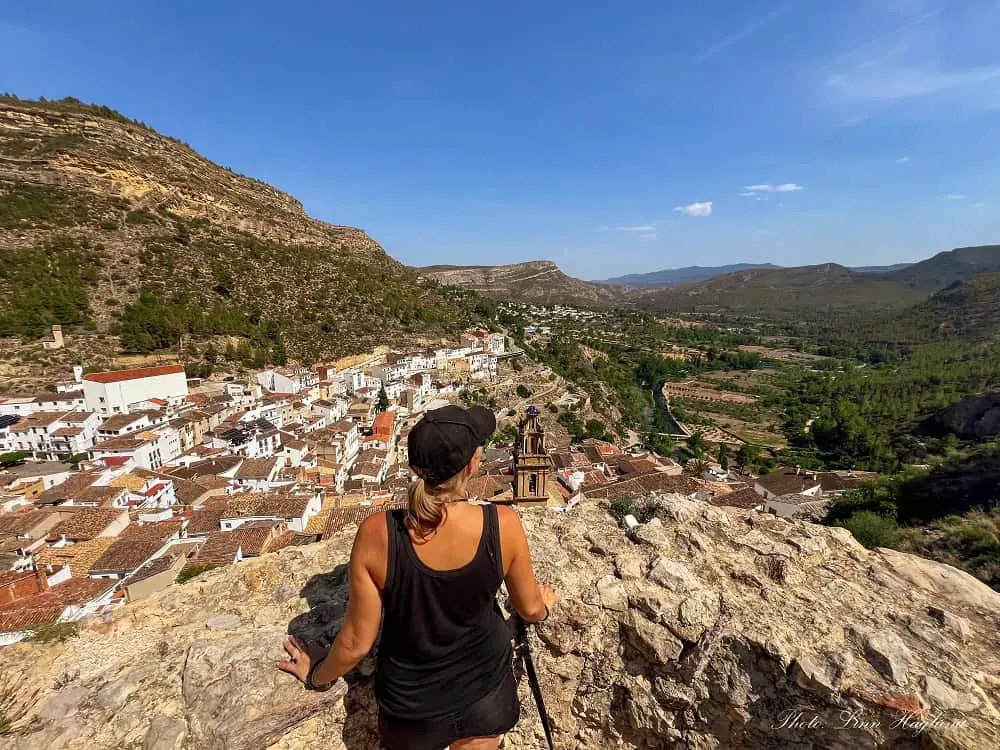
Charco Azul
The Charco Azul is a beautiful waterhole at the bottom of the gorge with deep blue water. It’s a bit of a hike to get there where you’ll pass other swimming spots on the way.
There is a wooden pier built into the water hole so you can jump in the water. There are a lot of plants in the water so it’s probably not so great to try to get in anywhere else.
Since it’s shaded by the gorge walls, it’s also a lot cooler there than in the village, making it the perfect escapade on a hot day.
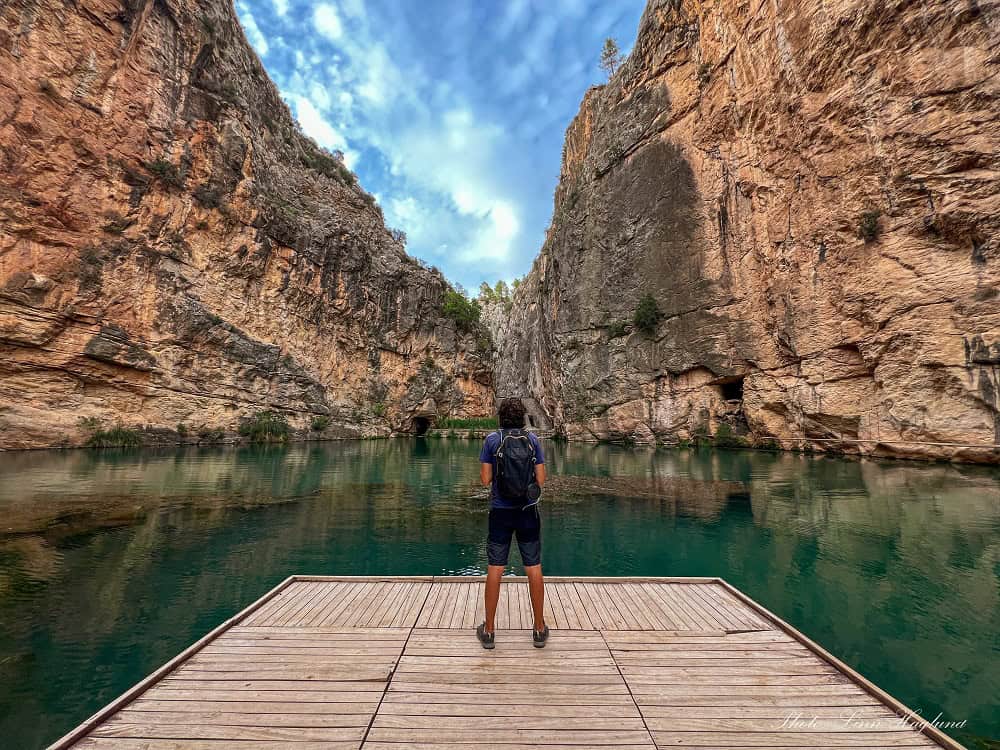
Hike to the prehistoric paintings
In 1998, there were discovered remarkable rock paintings that are believed to date back to sometime between the years 3500 and 2000 BC.
There is a hike directly from Chulilla to see them which takes about 2.5 hours return and is a 6-kilometer hike through forested trails.
We tried to find them, but when we were standing right below them, we couldn’t find the way up, so I assume that maybe some rocks or trees had fallen in front of the steps that go up there. When we were up on the trail we could see them from afar, but we couldn’t find the stairs that are built up the last few meters to the cave.
Hopefully, that’s fixed now so you can easily get there. The trail is well-marked until that spot. Here is a trail you can follow by downloading the Wikiloc hiking app.

Stroll around the town
The town of Chulilla is cute with steep, narrow streets and a small church in the middle. It’s got a very local feel and though Chulilla is a popular hiking and climbing destination, the village itself is not overrun by tourists in any way.
There are some local bars and restaurants where you can grab a bite to eat or a drink. We only found one tiny supermarket that hardly had anything and the prices were very steep.
We also experienced extremely unwelcoming service in the supermarket which is the first time I’ve experienced when traveling to Spain’s small villages where people mostly are super friendly.

Hike to the best viewpoint of Chulilla
Chulilla is a fantastic village to see from afar due to its unique castle covering the hillside. That’s why I think one of the best things to do in Chulilla is to head up the opposite hilltop for the views of the village.
There is a quite steep hike to the top of the hill that takes about 20-30 minutes one way. We didn’t do the hike because it was way too hot when we were there, not only for Mohammed and I, but also Baby Atlas was about to collapse after exploring the village in the heat.
We still went for some views, walking up the dirt road for just a few minutes. If you don’t feel like the whole climb (which I would totally do in temperatures under 30ºC!) I recommend just going a bit up as the views are pretty darn awesome even from there.

Hike Ruta de Los Pantaneros
If you’re up for a whole day hike, I can totally recommend Ruta de Los Pantaneros. It goes through the gorge and starts with the hanging bridges (so you must pay 1 Euro to do the hike as explained before.)
Instead of turning back, it loops past the dam with sweeping lake views and takes you past the prehistoric paintings (I highly recommend taking the detour, it’s just a few minutes extra and well marked.)
When walking back down to the village, you’ll walk in to Charco Azul before returning to Chulilla, so it’s basically an all in one hike making it one of my favorite hikes in Spain.
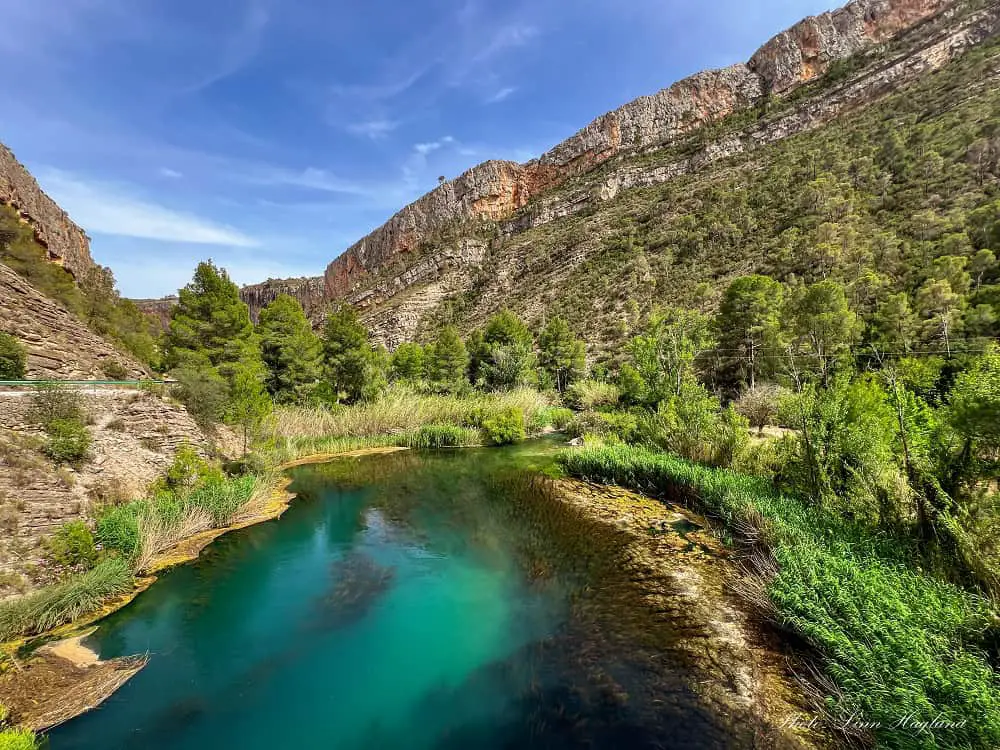
Reflections on Chulilla Spain
Summing up, Chulilla is a small town surrounded by grand nature. There are plenty of things to do in Chulilla for a few days, but if you want to see the highlights, you can easily walk the hanging bridges and the Charco Azul in one day and make time for walking along the castle ruins.
It’s not very campervan-friendly compared to other towns nearby, like Chelva and Buñol, but we went slightly off-season and enjoyed a spot with beautiful views where there were no prohibition signs.
Happy travels!
